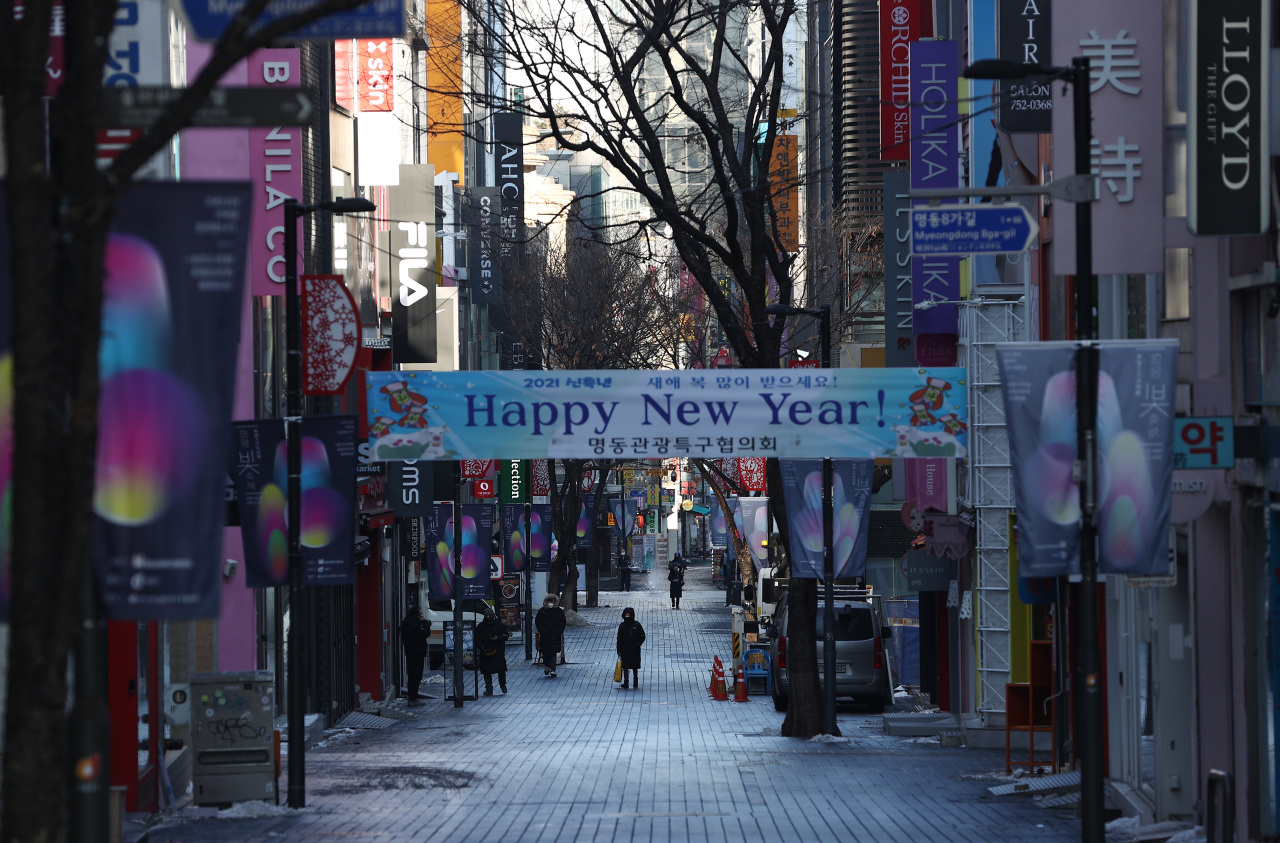
South Korea’s new cases of COVID-19 have fallen, but deaths and hospitalizations are climbing amid a lack of hospital beds and outbreaks among vulnerable populations.
In this month alone, 208 people have died of COVID-19, which makes up over 18 percent of a total of 1,125 deaths here so far. This compares with 148 deaths reported in the initial wave in the spring and 91 deaths during the summer resurgence last year.
The case fatality rate, or the proportion of people who died from the disease compared to all those diagnosed with the disease, rose to 1.64 percent from 1.41 percent a month ago.
What’s worse is that increasingly more patients are dying at home before they can be admitted to a hospital due to a shortage in beds. The latest such casualty was a nursing home worker in Paju, Gyeonggi Province, who had contracted the disease from one of the facility’s residents. The worker, who was in his or her 30s, was discovered dead Tuesday while isolating at home.
In principle, all those in quarantine are to be monitored by officials at respective municipal offices. But a handful have died recently before they could receive help.
A person in his or her 60s in Gyeonggi Province died Jan. 2 in home quarantine and tested positive for COVID-19 in a post-mortem examination, a day after another one in his or her 80s put under quarantine was found dead at home and tested positive for the disease later.
By Saturday afternoon, a near-record number of 57,900 people were under quarantine -- 22,329 after traveling internationally and 35,571 after coming into contact with a patient.
Following a streak of outbreaks at nursing homes and nursing hospitals across the country, more patients are developing severe symptoms. Nearly 35 percent of all recently diagnosed patients have been aged 60 or older.
Currently, there are 17,130 patients with active infections, of whom 401 are severely or critically ill. Nearly 70 percent of the country’s intensive care unit beds had been filled by Saturday afternoon.
Korea conducted 56,298 tests and confirmed 665 more cases of COVID-19 -- 631 locally transmitted and 34 from overseas -- on Sunday, according to the Korea Disease Control and Prevention Agency, bringing the cumulative number of official cases to 68,664.
Sunday marked a third consecutive day of a 600-something rise in daily infections, which is a considerable drop from over 1,000 cases seen from mid-December through early January. The week’s average number of cases registered per day was 738, down 193 from the previous week’s 931.
The government has said “the worst of the third wave of COVID-19 in Korea” has passed, and that the country is “entering a phase of gradual recovery.”
After seeing a fourth straight day of new cases under 1,000 on Friday, Yoon Tae-ho, a senior Ministry of Health and Welfare official, told a news briefing that Korea was “descending from the apex of the curve,” reiterating the ministry statement five days earlier that Korea was “either at or passing through the peak.”
The decline is largely attributable to social distancing restrictions of unprecedented intensity, he said, namely the ban on private gatherings of five or more people.
The ban was instituted in Seoul and its satellite areas of Incheon and Gyeonggi Province ahead of the holiday season on Dec. 23, and was then extended nationwide on Jan. 3 to last until Jan. 17.
After Jan. 17, most businesses that have been disallowed from operations are set to open again. Their reopening was permitted following criticism that the government had failed to properly compensate the businesses being ordered to shut down. Aid to businesses caught in social distancing was only around 1 million to 3 million won ($915-$2,740) each for the whole of last year.
Another round of cash payouts will be handed out to around 2.8 million small businesses in February and March, with each eligible for up to a slightly higher amount of 3 million won this time.
With the first batch of COVID-19 vaccines expected to arrive in February, the government on Friday launched a special team for vaccination preparations. The team, headed by KDCA Commissioner Jung Eun-kyeong, will plan and oversee the vaccines’ rollout from their storage and distribution to administration.
According to the government announcement, Korea has secured enough COVID-19 vaccines for around 56 million people -- exceeding its actual population -- to be delivered here in phases spanning several months. The government plans to complete vaccinations of priority groups, including at-risk populations and front-line health care workers, by November.
By Kim Arin (arin@heraldcorp.com)








![[Kim Seong-kon] Democracy and the future of South Korea](http://res.heraldm.com/phpwas/restmb_idxmake.php?idx=644&simg=/content/image/2024/04/16/20240416050802_0.jpg&u=)








![[KH Explains] Hyundai's full hybrid edge to pay off amid slow transition to pure EVs](http://res.heraldm.com/phpwas/restmb_idxmake.php?idx=652&simg=/content/image/2024/04/18/20240418050645_0.jpg&u=20240418181020)

![[Today’s K-pop] Zico drops snippet of collaboration with Jennie](http://res.heraldm.com/phpwas/restmb_idxmake.php?idx=642&simg=/content/image/2024/04/18/20240418050702_0.jpg&u=)